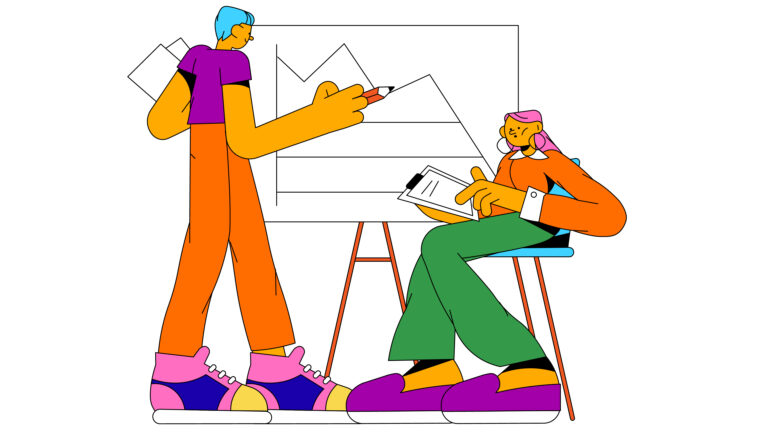Education is defined as “the process of receiving or giving systematic instruction.” Humans have always had the desire to learn and develop, and this is across all ages of life. We also all learn and think differently, and process information differently than others, which makes us all so much more interesting. There are factors such as age, personality, maturity, and experience that have to do with how we process information and learn.
Even genetic and environmental factors play into this. To truly understand our students and make sure they are successfully learning the education content, we must optimise and experiment with different educational methods to ensure that each student is taking in the curriculum aligned content successfully using their unique learning style. This helps create a more productive learning environment.
Traditional learning methods have been proven to be unsuccessful, with students retaining information differently, it wasn’t fairly measured across the board. Educational systems must improve and learn how to make education more enjoyable as well as efficient. Good educators and teachers understand educational psychology and help each student learn at their fullest potential.
The most common learning styles are:
-
1) Visual – learner relies on images and mind maps
2) Auditory- learns with music, rhythms and sounds
3) Physical- active, and learns by actually doing
4) Verbal- speech and writing
5) Logical- using reasoning to understand the concepts
6) Social – group learning
7) Solitary- self study or learning alone
Traditional educational methods are very broad and are more of a “one size fits all” approach for students. In the last 30 years, technology has helped change and evolve the landscape of education, helping create more unique experiences for each learner. Today’s students in K-12 are called “digital natives”, meaning they were born in the digital era and use tech often throughout their day to day.
Older generations are also using and adapting to tech and becoming more reliant on it in their businesses and day to day lives, and online learning can even adapt to this by becoming mobile.
Smartphones, computers, tablets and the internet are seemingly present and used all day, everyday in the real world. Technology has had a heavy influence on our culture and the way we operate and learn, and instead of being intimidated, we can use it to our advantage.
In the educational sphere, tech has been implementing gamification in the classroom, or adding game elements to non game contexts, and has shown to increase user engagement and helped motivate and track students behaviour and success rates. Although games themselves have been and are often used in education, not enough learning programs are using technology and fully utilising it within their gamified education practices. The result is that learning becomes limited due to not utilising properly, and lack of integration as well as resistance to change.
To help create change, educators need to understand how to effectively implement gamification into the educational system and processes. Game based learning will help with student motivation and increase their levels of engagement.
When implemented correctly, adding gamification in learning tasks can help increase the brain’s processing of information and content being taught during the lesson. Things like gamified lessons, using audio and visual elements, and repetitive patterns, as well as short term lapses can help and increase retention and the learning process overall become more engaging.
Our brains process new data in long term memory using a layered process that involves attention, selection, perception and the organisation of information. Our working memory, or short term can only handle small amounts of information at a time. Theories suggest that the human brain can process up to 7 pieces of information at once, and all will be lost within 20 seconds if it doesn’t further get processed into long term memory.
The human brain also processes information in two main ways, visual and auditory. When information is presented using these channels, the brain begins to process the new information. If there is an information overload, the brain may block all new information to be processed as long term memory. It is best for information to be presented in small pieces, and organised well.
This will allow the brain to organise the new information into blocks within our long term memory.
There has been further research that has recently shown that the human attention span has been decreasing, from 12 seconds to now an average of 8. With the digital age disrupting our daily processes, this has caused us to not be as able to focus as much as before. However, there have been benefits, such as quicker reaction time, and more ability to multitask. All development and research just proves the need for strategies such as gamification be implemented to help retain new knowledge with students.
In summary, Gamification within the educational sector has been proven to motivate learners and increase engagement overall. Having Game elements such as earning badges and rewards for completing challenges successfully have shown to be very motivating and influential in increasing a student engagement, intrinsic motivation, and willingness to learn within the classroom.
When implementing gamified learning within a group setting, this leads to further benefits. The effects of gamification activate neurotransmission in the brain, rewiring as well as brain plasticity, and helps relieve oxidative stress.
The benefits of using gamification can help improve and make the learning experience more fun by providing a dopamine release when winning. In games, when a player receives positive feedback, or wins, this activates the brain’s pleasure circuits and releases the dopamine. Games in an educational setting provide the same release when a player wins a challenge or achieves a goal. This provides a long lasting all around “good feeling” towards an academic subject.
Conclusion
We are living in an age and culture where children and adults of all ages spend lots of time playing video games. Why not bring the positive impact of gamification into the educational sphere as well? There is great evidence that helps lead to positive changes in brain functions.
Adding elements of gamification to education and learning activities, when correctly implemented, can be a healthy addition and an integral part of helping modernise education within the digital era. Archy Learning has partnered with Gamify to help achieve this, grab your free trial today!




